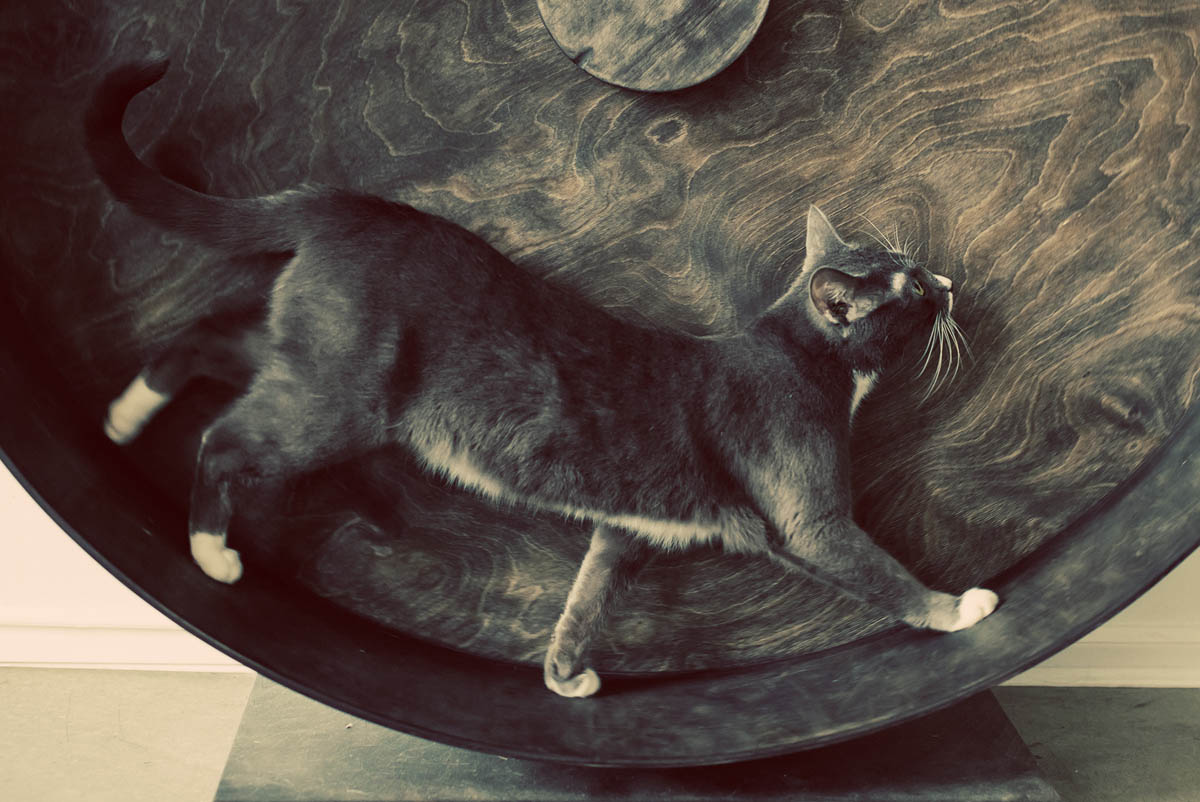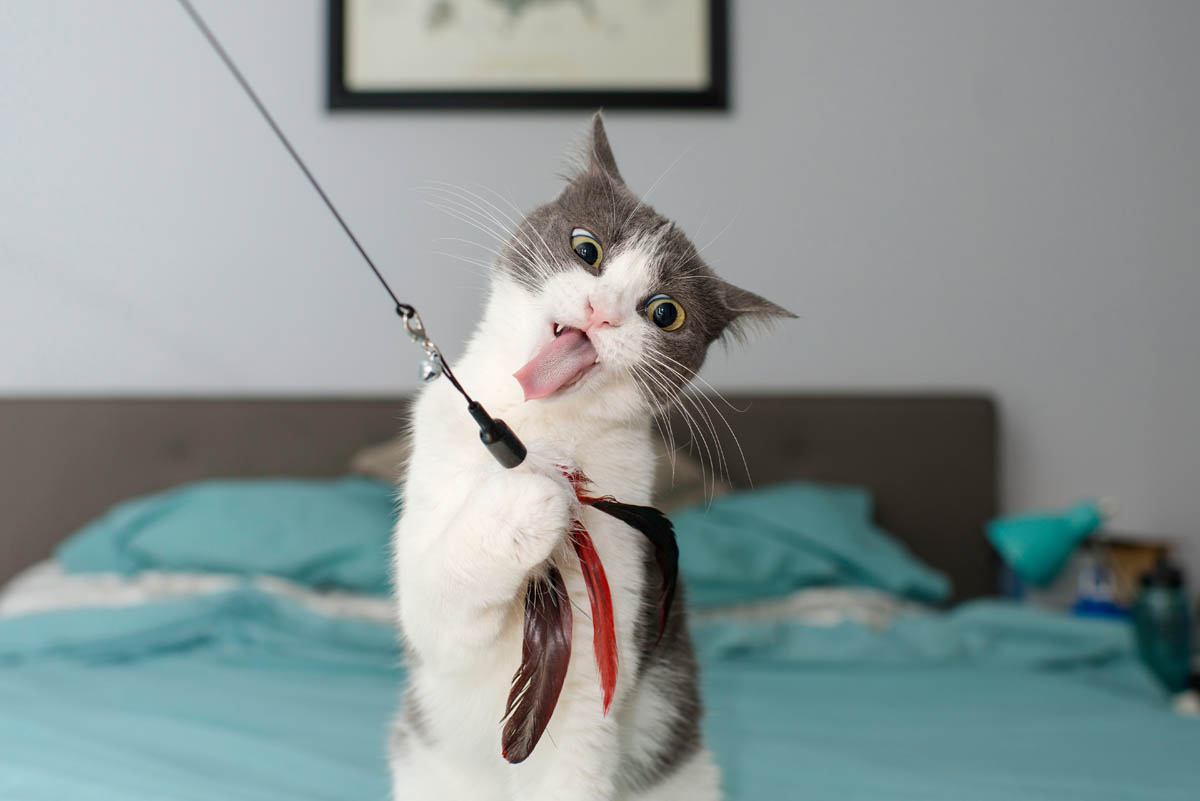Play therapy is a way pet owners can interact with their cats and has several positive benefits to both cat and owner. Most pet behaviourists recommend play therapy as a way to combat common cat issues. This kind of interactive play involves you interacting in a game of hunt with the use of a wand toy (fishing pole-type toy), and the cat as the hunter.
Cats are predators and interactive play taps into this natural behaviour which in the wild consists of:
hunt > catch > kill > eat > groom > sleep
By contrast, our cats have food served to them twice a day with little opportunity to engage in their natural predatory behaviour. Left to their own devices, boredom and lack of exercise can manifest in obesity and in some cases, behavioural issues.
Benefits of play therapy
Physical exercise
All cats need exercise to keep the body healthy, the muscles and bones strong. Almost 60% of cats in the United States are overweight or obese. Regular exercise can help to maintain a healthy weight and prevent obesity-related diseases.
Mental stimulation
More and more cats are kept indoors to keep them safe from common dangers as well as protect local wildlife. We must give cats an outlet to exercise their body and brain. It is not fair to expect cats to remain inside with no stimulation.
Bonding time
Play therapy provides the opportunity for pet owners to spend quality time bonding with their cat.
Help in the introduction-phase
When we choose to bring a new cat into a home that already has a cat, creating positive associations with the new cat can help to smooth things over. As with all introductions, it is important to go slow until both cats are comfortable with each other. Play therapy can help to break the ice.
How often should I schedule play therapy?
Ideally, two 10-15 minute sessions a day. One in the morning, and again before bed, but for those of you who don’t have time, one play session is better than none at all. Remember, the key is to make it a routine and immediately after the play session, feed the cat. Try to schedule the play session at the same time every day, preferably in the morning and the evening. Cats thrive on routine.
What kind of toys should I use?
Wand toys (such as Da Bird) are one of the best interactive cat toys. You are at one end, controlling the wand, the cat is on the other end, stalking it. Try to re-create the natural stalking and killing behaviour of a cat in the wild. Cats are designed for short bursts of energy only.
- Move the wand slowly and let the cat stalk it, make the toy move as a bird or rodent would. Don’t make it too easy or dangle the toy in the cat’s face, it’s not challenging and the cat will become bored. Don’t frantically wave the toy around in the air either, that will frustrate the cat.
- Once caught, let the toy play dead (as a mouse or bird would do in the wild). If the cat lets go, quickly move the wand away and begin the stalk, chase and kill game again.
- Finish the game on a high note and allow the cat to catch and kill the toy, follow up with a meal, which is how a real-life hunt would end.
- Once the game is over, put the toy away until the next play session, but provide the cat with additional interactive toys to play with on his or her own.
Other interactive toys
Even when you are not home, or playing with the cat, interactive toys can keep them entertained and stave off boredom.
Anybody who shares their home with a cat knows how much they love boxes…more than the actual contents of the box.
Balls, mice, corks for the cat to bat around. I like corks because the movement can be unpredictable, unlike a ball that rolls across the floor.
Paper bags (take the handles off), that the cat can jump on and play inside.
Food puzzles, filled with treats that the cat has to work to get to.
Exercise wheels, which are large versions of the type pet mice and hamsters use.

Make sure that toys don’t have parts that can easily be chewed off and swallowed and rotate toys regularly.

